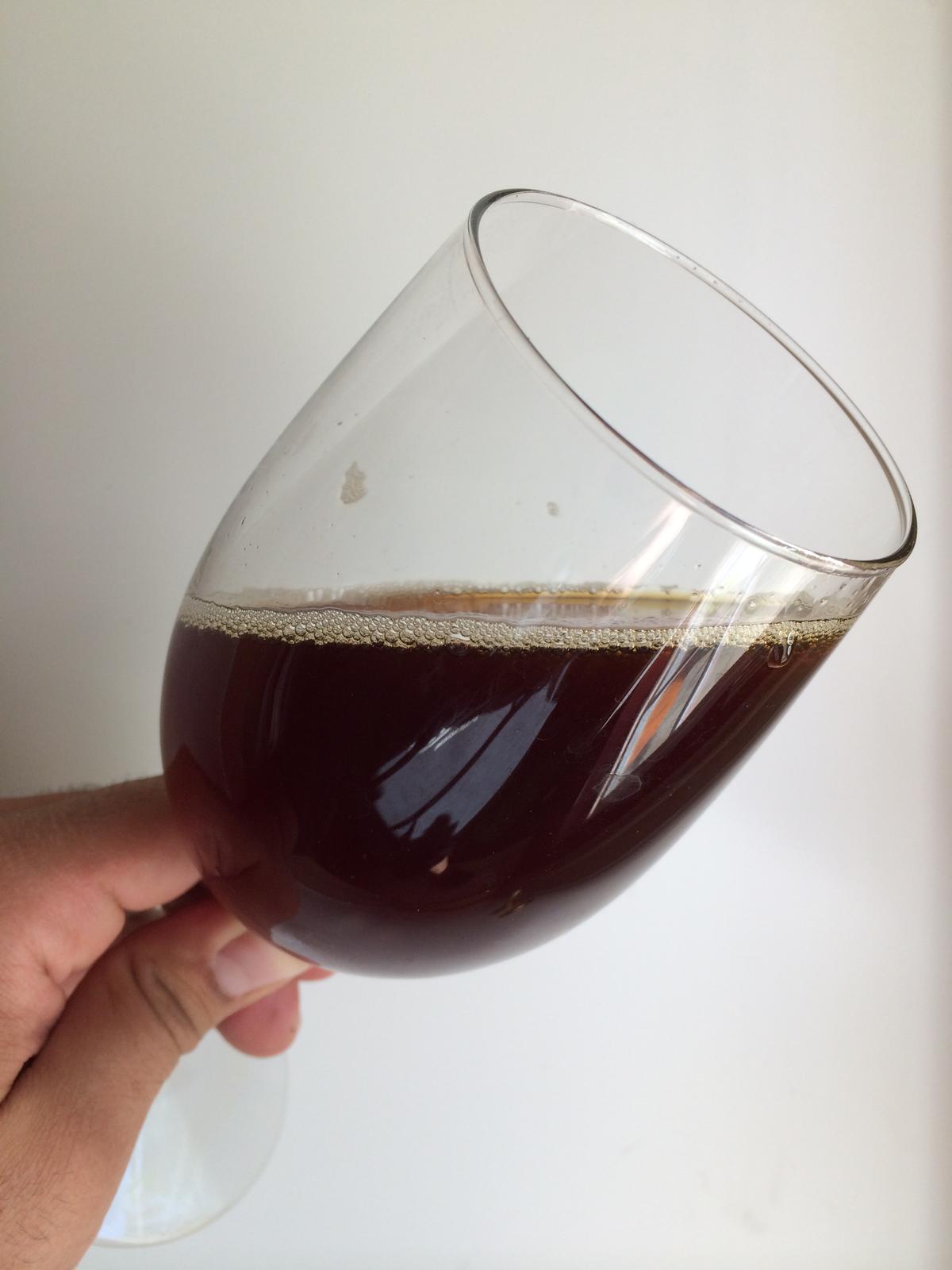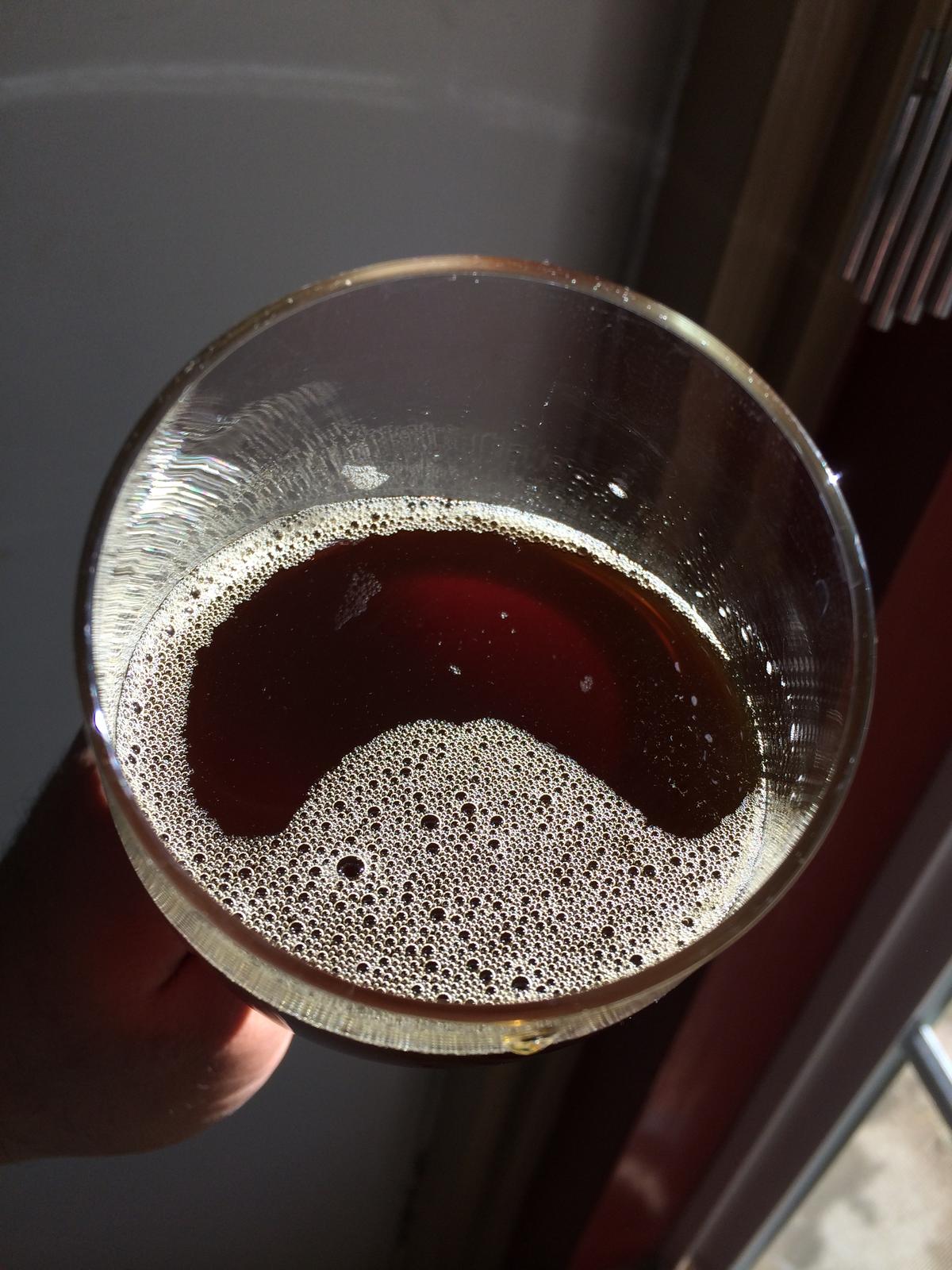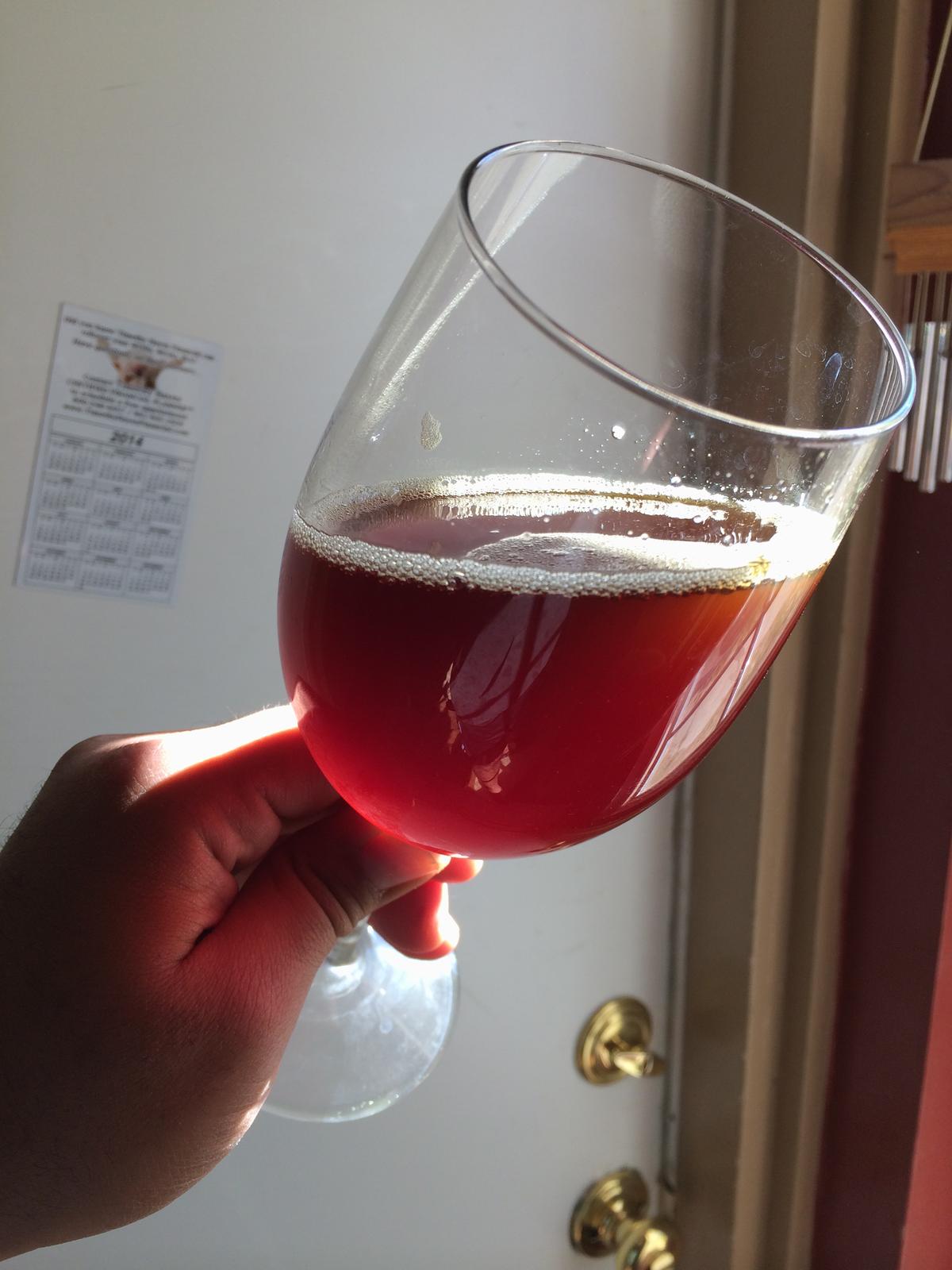You are using an out of date browser. It may not display this or other websites correctly.
You should upgrade or use an alternative browser.
You should upgrade or use an alternative browser.
Can you Brew It recipe for Stone Arrogant Bastard
- Thread starter EricCSU
- Start date

Help Support Homebrew Talk:
This site may earn a commission from merchant affiliate
links, including eBay, Amazon, and others.
Anyone else get massive lacing on this beer?
Just trying to figure out if this batch I made without a pump made that much of a difference, thanks.
Yes! Lotsa sticky, malty goodness with a punch in the face from Chinook. Love this beer and will be my next brew!
Not sure what you mean by made without a pump though?
ultravista
Well-Known Member
Cool looks like my version. Did you do a 1.5 oz zero minute addition? If not your missing out on a lot of the late hop character.
Wouldn't moving these hops to the dry hop stage bring more of the hop character out even more?
cannman - please post your Beersmith file.
cannman - please post your Beersmith file.
https://www.homebrewtalk.com/f12/ca...ogant-bastard-176191/index93.html#post6462653
View attachment AB Clone V2.bsmx
ultravista
Well-Known Member
Thank you. I like to have it in Beersmith vs. image of the recipe.
Thank you. I like to have it in Beersmith vs. image of the recipe.
With respect to canman, I'd use redskinfan's recipe in post 845. There's not much known about AB, but it's pretty well-known it's only two malts and no dry hop.

$159.50 ($26.58 / Count)
3M High Flow Series System BREW120-MS, 5616001, For Brewed Coffee and Hot Tea, Valve-in-Head Design
Amazon.com

$176.97
1pc Commercial Keg Manifold 2" Tri Clamp,Ball Lock Tapping Head,Pressure Gauge/Adjustable PRV for Kegging,Fermentation Control
hanhanbaihuoxiaoshoudian

$22.00 ($623.23 / Ounce)
AMZLMPKNTW Ball Lock Sample Faucet 30cm Reinforced Silicone Hose Secondary Fermentation Homebrew Kegging joyful
无为中南商贸有限公司

$479.00
$559.00
EdgeStar KC1000SS Craft Brew Kegerator for 1/6 Barrel and Cornelius Kegs
Amazon.com
![Craft A Brew - Safale S-04 Dry Yeast - Fermentis - English Ale Dry Yeast - For English and American Ales and Hard Apple Ciders - Ingredients for Home Brewing - Beer Making Supplies - [1 Pack]](https://m.media-amazon.com/images/I/41fVGNh6JfL._SL500_.jpg)
$6.95 ($17.38 / Ounce)
$7.47 ($18.68 / Ounce)
Craft A Brew - Safale S-04 Dry Yeast - Fermentis - English Ale Dry Yeast - For English and American Ales and Hard Apple Ciders - Ingredients for Home Brewing - Beer Making Supplies - [1 Pack]
Hobby Homebrew

$53.24
1pc Hose Barb/MFL 1.5" Tri Clamp to Ball Lock Post Liquid Gas Homebrew Kegging Fermentation Parts Brewer Hardware SUS304(Liquid Hose Barb)
Guangshui Weilu You Trading Co., Ltd

$76.92 ($2,179.04 / Ounce)
Brewing accessories 1.5" Tri Clamp to Ball Lock Post Liquid Gas Homebrew Kegging Fermentation Parts Brewer Hardware SUS304 Brewing accessories(Gas Hose Barb)
chuhanhandianzishangwu

$44.99
$49.95
Craft A Brew - Mead Making Kit – Reusable Make Your Own Mead Kit – Yields 1 Gallon of Mead
Craft a Brew

$10.99 ($31.16 / Ounce)
Hornindal Kveik Yeast for Homebrewing - Mead, Cider, Wine, Beer - 10g Packet - Saccharomyces Cerevisiae - Sold by Shadowhive.com
Shadowhive

$20.94
$29.99
The Brew Your Own Big Book of Clone Recipes: Featuring 300 Homebrew Recipes from Your Favorite Breweries
Amazon.com

$58.16
HUIZHUGS Brewing Equipment Keg Ball Lock Faucet 30cm Reinforced Silicone Hose Secondary Fermentation Homebrew Kegging Brewing Equipment
xiangshuizhenzhanglingfengshop

$719.00
$799.00
EdgeStar KC2000TWIN Full Size Dual Tap Kegerator & Draft Beer Dispenser - Black
Amazon.com

$7.79 ($7.79 / Count)
Craft A Brew - LalBrew Voss™ - Kveik Ale Yeast - For Craft Lagers - Ingredients for Home Brewing - Beer Making Supplies - (1 Pack)
Craft a Brew

$53.24
1pc Hose Barb/MFL 1.5" Tri Clamp to Ball Lock Post Liquid Gas Homebrew Kegging Fermentation Parts Brewer Hardware SUS304(Liquid Hose Barb)
yunchengshiyanhuqucuichendianzishangwuyouxiangongsi

$33.99 ($17.00 / Count)
$41.99 ($21.00 / Count)
2 Pack 1 Gallon Large Fermentation Jars with 3 Airlocks and 2 SCREW Lids(100% Airtight Heavy Duty Lid w Silicone) - Wide Mouth Glass Jars w Scale Mark - Pickle Jars for Sauerkraut, Sourdough Starter
Qianfenie Direct
With respect to canman, I'd use redskinfan's recipe in post 845. There's not much known about AB, but it's pretty well-known it's only two malts and no dry hop.
Wait just one second... are you trying to give me an excuse to brew even MORE malty goodness?? How dare you......:cross:
Yes! Lotsa sticky, malty goodness with a punch in the face from Chinook. Love this beer and will be my next brew!
Not sure what you mean by made without a pump though?
I stopped using a pump for a couple batches purposely trying to see if it made a difference with my beer (mainly hot-side aeration). There is a thread here where people debate protein shear when using a pump. I am not convinced that this is the cause, just mainly curious at this point.
https://www.homebrewtalk.com/f36/recirculating-through-entire-mash-process-430982/
crusader1612
Well-Known Member
Wow, taste like flat AB at bottle!
Great job on this recipe! Casked 1 gal @1.2 vol, bottled 4 gal 2.5vol.
By Cask you mean that portable water container right? Can you explain you process on this??
By Cask you mean that portable water container right? Can you explain you process on this??
Check out
Campaign for Real Ale
Wiki Campaign for Real Ale
Plastic Inserts
This thread helps: Reusing Mini Kegs

crusader1612
Well-Known Member
Thanks, but I'm more talking about your particular process.
You linked the container you use, which is handy.
How are you dispensing it from the cube? beer engine? sparkler? etc. etc.
I assume you are priming to 1.2 volumes in the cube, then carbing from there.
Thanks, but I'm more talking about your particular process.
You linked the container you use, which is handy.
How are you dispensing it from the cube? beer engine? sparkler? etc. etc.
I assume you are priming to 1.2 volumes in the cube, then carbing from there.
Well, I was going more for the "Teach a man to fish..." path, but ok:
Campaign for Real Ale or "CAMRA" advocates for the serving of, among other things, "real ale." Real Ales must be served from a cask without additional carbonation and therefore kegged beer which is force carbonated and propelled does not qualify [1]. Check out this article about the hardline CAMRA draws between KEG and CASK. Ultimately, beer is served using gravity directly from the secondary fermenting unit (CASK). "Real ale is a natural product brewed using traditional ingredients and left to mature in the cask (container) from which it is served in the pub through a process called secondary fermentation. It is this process which makes real ale unique amongst beers and develops the wonderful tastes and aromas which processed beers can never provide. (http://www.camra.org.uk/about-real-ale)"

Because I don't have room for a full wooden cask, I learned about homebrewers using food grade plastic containers in various sizes as a substitution. These plastic inserts were specifically recommended by a brewer here on this website for this purpose. I selected the 1 gallon size due to the consideration of my batch size, and conditioning unit's dimensions. While traditional cask is served in the secondary, mine will be served from tertiary fermentation for the following reasons (and considerations you may need to take too): The spout of the plastic bin was too tiny to handle "trub" that might remain from the secondary, although it is not uncommon to serve brew from a cask with "dry hops" still in the unit; I needed to transfer the rest of the beer to bottles and I didn't find fermenting a 1 gallon plastic jug that I have no idea would survive active fermentation practical so my primary was a 6 gal carboy;
In standard CAMRA casks, no additional carbonation is introduced as its naturally created during the secondary, but because my secondary was NOT retaining carbonation and was not pressurized (5 gallon glass carboy), I had to introduce carbonation in the tertiary via corn sugar, but at half of what you would find in bottled beer, in order to mimic traditional casked beer.
It will rest at a cellar temperature appropriate for the style of 50F and served at this temp in 5 days.
hmmmm that's the run down! I hope you enjoyed.
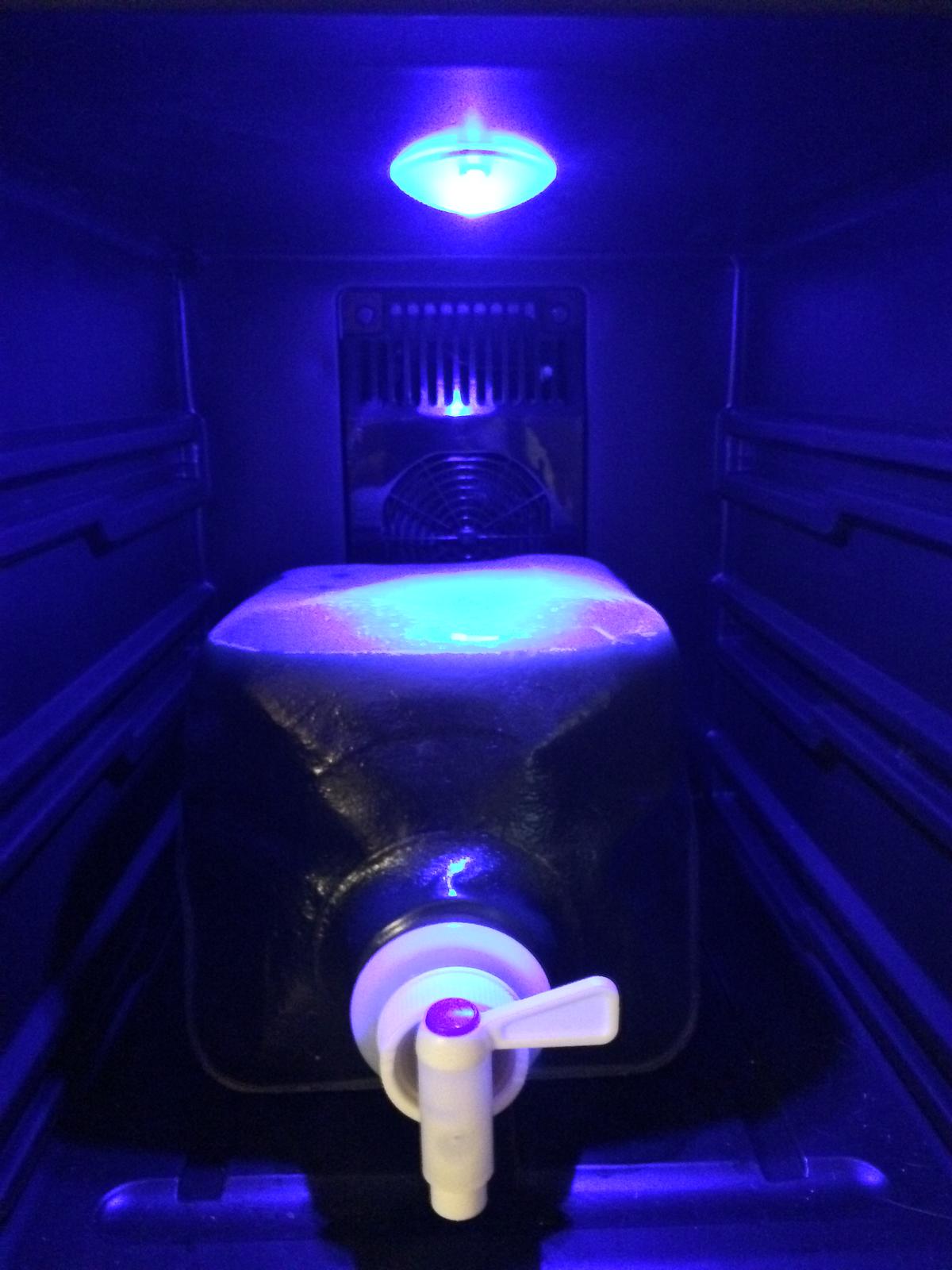
fixitoscar
Well-Known Member
wow cannman, very cool! Have you tried cask style in that container before?
dyqik
Well-Known Member
Real ale doesn't have to be served by gravity, just without CO2. Hand pumps/beer engines are just fine by CAMRA. Which is good, because every pub and beer festival in the UK uses them.
wow cannman, very cool! Have you tried cask style in that container before?
No this is my first go at the attempt. My initial plan was to cask at least 1 gallon of every brew from here on out for the sake of experiencing the different characteristics of the brew.
Real ale doesn't have to be served by gravity, just without CO2. Hand pumps/beer engines are just fine by CAMRA. Which is good, because every pub and beer festival in the UK uses them.
That's a good thing. I'm not a CAMRA purist by any means. I've always believed there are several ways to an end result... explore 1,2, or more. Life is too short to not experience good beer.
I opened up the AB from the plastic insert "cask" today, and here are my observations:
1) There is no plastic after taste, no off flavors.
2) The beer does taste a little flat and perhaps with a hint of oxidation (is this cask beer?). It is just SLIGHTLY crisper (and mellower) than the samples I remember from bottling day (5 days ago).
3) Since there is little carbonation, I can really appreciate the malt character of the beer. Unfortunately I LOVE carbonation. In fact, club soda is my favorite beverage (uh, besides beer).
4) Casked beer seems to be a true connoisseur's venture. If I didn't love beer enough to dedicate hours of my life to the trials and tribulations of homebrewing and ultra quality, I'd says "skip casking." HOWEVER, keep this in mind: You cannot BUY beer made this way (at least here in rural California, and perhaps a thousand miles even so). Therefore, it may be worth dedicating a small portion of your batches to mini-casking to experience and share this interesting way to enjoy beer.
Here are some photos from today's cask tapping.

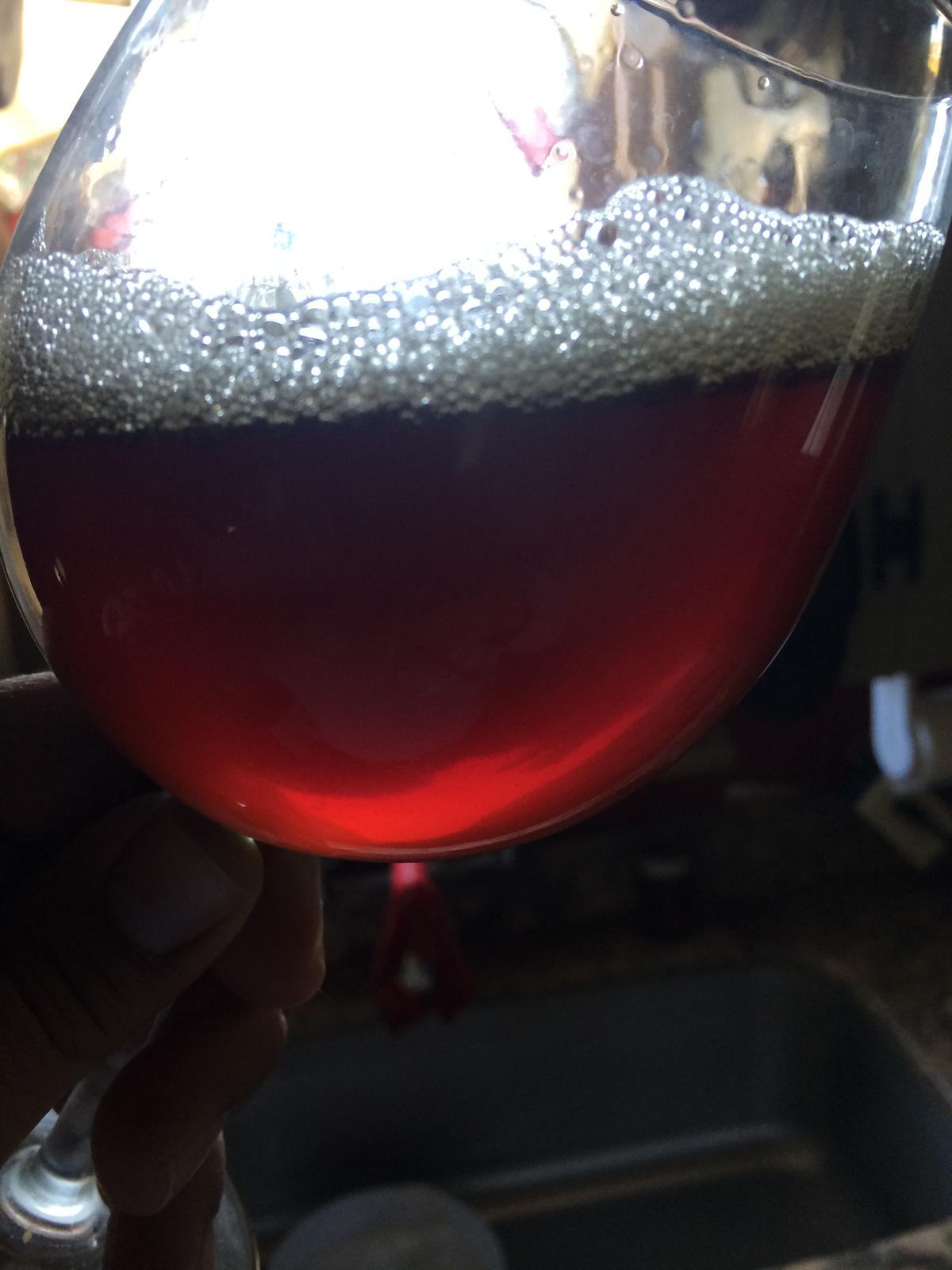
1) There is no plastic after taste, no off flavors.
2) The beer does taste a little flat and perhaps with a hint of oxidation (is this cask beer?). It is just SLIGHTLY crisper (and mellower) than the samples I remember from bottling day (5 days ago).
3) Since there is little carbonation, I can really appreciate the malt character of the beer. Unfortunately I LOVE carbonation. In fact, club soda is my favorite beverage (uh, besides beer).
4) Casked beer seems to be a true connoisseur's venture. If I didn't love beer enough to dedicate hours of my life to the trials and tribulations of homebrewing and ultra quality, I'd says "skip casking." HOWEVER, keep this in mind: You cannot BUY beer made this way (at least here in rural California, and perhaps a thousand miles even so). Therefore, it may be worth dedicating a small portion of your batches to mini-casking to experience and share this interesting way to enjoy beer.
Here are some photos from today's cask tapping.


with pins that i've served beer from at a cask-conditioned ale fest, they use a porous spile to let in air, otherwise flow would cease due to vapor-lock. i think in general, cask beer must Be served in 2-3 days time, after tapping.
dyqik
Well-Known Member
Polyethylene is gonna let quite a bit of oxygen through.
Do cask ales get flatter as it gets drunk like a growler? Or does vacuum get created in the beer's absence?
They don't get much flatter, as they are only carbed to a small amount above atmospheric pressure, and this is released a day or two before serving when you first swap the hard spile for a soft spile. In polypins, the bag collapses as you pour. In rigid casks you either let air in through the soft spile, or (if no one from CAMRA is watching) you use a cask breather to let CO2 in at atmospheric pressure. I've got a golden ale on cask (speidel fermenter) that's still drinnkable at over 2 months old using a cask breather.
If you want to make a cheap cask breather - use a LP propane regulator in the gas line, which is preset to about 0.4 psi.
seadad9903
Active Member
- Joined
- May 10, 2013
- Messages
- 35
- Reaction score
- 6
I know this is a sidetrack, but casking (the way y'all are talking about) beer is putting it in a container that can "breathe" at cellar temps without any extra carbonation. Is that more or less correct?
How much pressure do you think Mitch has on those conicals? It could be duplicated with kegs as secondaries. any guesses?
Keep in mind the fermenter size and shape Mitch uses versus the fermenter size Homebrewers use. A huge cylindro-conical had a lot of hydrostatic pressure which suppresses a lot of ester generation. This suppression allows them to ferment at a higher temp. If you use a Carboy or 15gal conical, you won't get the same suppression due to pressure (unless you pressurize your conical). For this reason, you will have to ferment at a lower temp than what Mitch uses unless you want a lot more fruity esters in the beer.[/QUOTE]
Keep in mind the fermenter size and shape Mitch uses versus the fermenter size Homebrewers use. A huge cylindro-conical had a lot of hydrostatic pressure which suppresses a lot of ester generation. This suppression allows them to ferment at a higher temp. If you use a Carboy or 15gal conical, you won't get the same suppression due to pressure (unless you pressurize your conical). For this reason, you will have to ferment at a lower temp than what Mitch uses unless you want a lot more fruity esters in the beer.[/QUOTE]
Could we go back to ABA and not clutter up this subject...
Thanks, but I'm more talking about your particular process.
You linked the container you use, which is handy.
How are you dispensing it from the cube? beer engine? sparkler? etc. etc.
I assume you are priming to 1.2 volumes in the cube, then carbing from there.
ultravista
Well-Known Member
I decided to go with CaraAroma for my Double Bastard. Hope it turns out good ...
[/QUOTE]How much pressure do you think Mitch has on those conicals? It could be duplicated with kegs as secondaries. any guesses?
Keep in mind the fermenter size and shape Mitch uses versus the fermenter size Homebrewers use. A huge cylindro-conical had a lot of hydrostatic pressure which suppresses a lot of ester generation. This suppression allows them to ferment at a higher temp. If you use a Carboy or 15gal conical, you won't get the same suppression due to pressure (unless you pressurize your conical). For this reason, you will have to ferment at a lower temp than what Mitch uses unless you want a lot more fruity esters in the beer.
Well, I've never been to Stone, but I believe they're using 100 BBL fermenters. If you take the approximate dimensions of a 100BBL cylindro-conical fermenter, calculate the height of the fluid in the vessel (we know the volume), then you could get the approximate pressure at any given point in the vessel. I'm sure the sea level for Escondido is also noted somewhere if you really want to get into it.
OR... you could listen to the CYBI episode where JZ and Tasty pretty much determine what temp works best for all Stone beers (it should be one the first page of this thread.
I apologize for the ambiguous answer... It's been many years since I've had that sort of fluids problem!
So I brewed this up again yesterday and MAN was the aroma like heaven. A brewer buddy stopped by right as the boil started and he said he could smell it before he got to the house! Potent, malty, hoppy!!
I will let you all know how this one goes as I changed up the recipe quite a bit based on tasting and feedback from others doing this. I switched over to CaraAroma as Mike suggested and added in a pound of honey naked oats. I moved the hops around and increased the amount. I moved the 20,10,15 to really late additions at 5 and flameout and bumped them up a bit as the hops I used were probably a year old, though sealed and in the freezer.
My efficiency was out of this world and I was able to pull off an extra 2.5 gallons of 1.064 wort which I will use to make a 1 gallon batch and for starters.
I have not made this beer in a looong time and had forgotten how damned good it smells!! Can't wait to knock back a few!
Cheers!
I will let you all know how this one goes as I changed up the recipe quite a bit based on tasting and feedback from others doing this. I switched over to CaraAroma as Mike suggested and added in a pound of honey naked oats. I moved the hops around and increased the amount. I moved the 20,10,15 to really late additions at 5 and flameout and bumped them up a bit as the hops I used were probably a year old, though sealed and in the freezer.
My efficiency was out of this world and I was able to pull off an extra 2.5 gallons of 1.064 wort which I will use to make a 1 gallon batch and for starters.
I have not made this beer in a looong time and had forgotten how damned good it smells!! Can't wait to knock back a few!
Cheers!
reddskinnfan
Well-Known Member
Can't wait to hear results!
ultravista
Well-Known Member
After brewing Pliny the Elder last weekend (MoreBeer's recipe), I am thinking about tweaking my Double Bastard. Perhaps a healthy charge of bittering Chinook at the beginning of the boil, a smaller charge at flameout (steep 10-20 minutes < 200F), and get all of the flavor & aroma by dry hopping.
Stonebrewer, what was your actual hop schedule?
Stonebrewer, what was your actual hop schedule?
crusader1612
Well-Known Member
After brewing Pliny the Elder last weekend (MoreBeer's recipe), I am thinking about tweaking my Double Bastard. Perhaps a healthy charge of bittering Chinook at the beginning of the boil, a smaller charge at flameout (steep 10-20 minutes < 200F), and get all of the flavor & aroma by dry hopping.
Stonebrewer, what was your actual hop schedule?
From what I understand, the beer is dryhopped but theres talk it also uses centennial as well. (double bastard I mean)
So I don't think (operative word is think) that AB is dry hopped. I moved things later and made them a little bigger this go around. I have not tried this beer yet as it is still in the fermentor, but this is my schedule this go around:
2.00 oz Chinook [11.10 %] - First Wort 90.0 min Hop 7 36.0 IBUs
1.50 oz Chinook [11.10 %] - Boil 90.0 min Hop 8 24.5 IBUs
1.50 oz Chinook [11.10 %] - Boil 20.0 min Hop 9 13.9 IBUs
1.50 oz Chinook [11.10 %] - Boil 5.0 min Hop 11 4.6 IBUs
1.50 oz Chinook [11.10 %] - Boil 0.0 min Hop 12 0.0 IBUs
I can tell you it smelled fantastic all during and after the boil. So even if this isn't even close, it is going to be a fantastic beer!
Drinking PtE now and have brewed that beer a few times. I used hop shots the last time for bittering and it was pretty close and I had less loss because of the resin...
2.00 oz Chinook [11.10 %] - First Wort 90.0 min Hop 7 36.0 IBUs
1.50 oz Chinook [11.10 %] - Boil 90.0 min Hop 8 24.5 IBUs
1.50 oz Chinook [11.10 %] - Boil 20.0 min Hop 9 13.9 IBUs
1.50 oz Chinook [11.10 %] - Boil 5.0 min Hop 11 4.6 IBUs
1.50 oz Chinook [11.10 %] - Boil 0.0 min Hop 12 0.0 IBUs
I can tell you it smelled fantastic all during and after the boil. So even if this isn't even close, it is going to be a fantastic beer!
Drinking PtE now and have brewed that beer a few times. I used hop shots the last time for bittering and it was pretty close and I had less loss because of the resin...










































